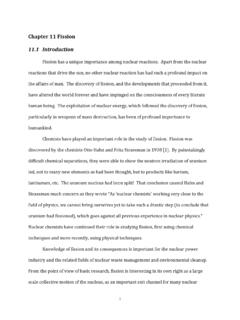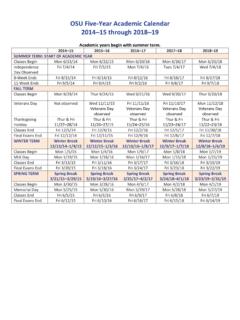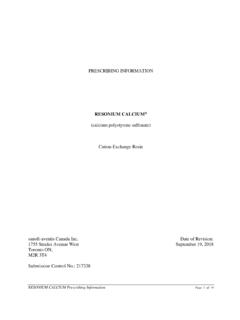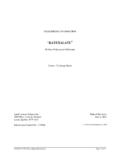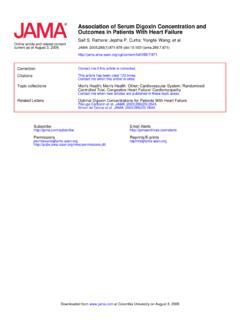Transcription of Digoxin - Oregon State University
1 Digoxin Wayne Kradjan Dean and Professor OSU College of Pharmacy Reading Required: Bauer chapter 6. Suggested: Applied Therapeutics, 8th edition. Chapter 19. (Kradjan). Rathore SS, Curtis JP, Wang Y, et al. association of serum Digoxin concentration and outcomes in patients with heart failure. JAMA. 2003;289(7):871-8. Adams KF Jr, Patterson JH, Gattis WA, et al. Relationship of serum Digoxin concentration to mortality and morbidity in women in the digitalis investigation group trial: a retrospective analysis. J. Am Coll Cardiol. 2005;46(3):497-504. 1. Digoxin A cardiac glycoside (digitalis lanata Foxglove). The only one used clinically Heart Failure Inability of heart to provide adequate blood flow to sustain normal tissue perfusion.
2 Systolic dysfunction. Myocardial muscle function loss; Pump failure . Activation of sympathetic nervous system and the renin-angiotensin-aldosterone system Vasoconstriction and increased heart rate Resistance to cardiac output (afterload on heart). Stress on heart due to continued heart stimulation Reduced blood flow to kidney 2. Treatment of Heart Failure Goals: Relieve symptoms Prevent/slow progression of disease Improve survival Drug treatment: Loop diuretics reduce congestion, fluid accumulation ACE-I (or ARB if ACE is poorly tolerated) reduce effects of angiotensin and aldosterone Beta-blockers reduce sympathetic tone Digoxin positive inotrope vs reduced sympathetic tone; declining use Digoxin use in Heart Failure Place in therapy Improves clinical status and improves heart failure symptoms.
3 Withdrawal can cause re-emergence of symptoms Digoxin provides no mortality benefit May be added on to patients who continue to have symptoms despite optimal therapy Optimal serum level: ng/mL. 3. Atrial Fibrillation Digoxin Mechanism in Atrial Fibrillation Rate control, not rhythm control Increased vagal tone; parasympathetic activity Block conduction through the AV node Decreases conduction velocity and prolongs the refractory period of the AV node Prolongs PR interval on EKG and slow ventricular response rate Less effective than beta blocker or calcium channel blocker Especially during exercise Optimal serum level: not known Efficacy and serum concentrations do not correlate 4.
4 Digoxin dosage forms Tablet Liquid filled capsule (Lanoxin and generic) (Lanoxicaps). mg (125 mcg) mg mg mg (250 mcg). mg mg (500 mcg). Injection Elixir mg/mL. mg/mL. Absorption/ Bioavailability Absorption Amount absorbed (F) is dependent on the dosage form used Significant interpatient variability Note: much of this data is over 30 years old Problems with dissolution and rate of absorption, not extent of absorption. 5. Bioavailability (fraction of dose absorbed: F). Tablet = ( ). Lanoxin vs AB rated generics (Digitek) vs older products Liquid filled capsule (Lanoxicaps) = ( ). Elixir (pediatric) = ( ). Most studies done using injectable product in juice Factors affecting Bioavailability P glycoprotein substrate Multi drug transporter that acts as a drug efflux pump across cell membranes in epithelial and endothelial cells of intestine, liver, and kidney.
5 Transport drugs from the blood back into the gut lumen. Promote clearance by enhancing renal tubular secretion and inhibiting renal tubular reabsorption. Gut edema from heart failure Gut metabolism? ~10% of patients. GI flora metabolize Digoxin to inactive metabolites. Relevant mostly for slowly absorbed tablets, not liquicaps or elixir. Erythromycin or clarithromycin may reduce gut flora and allow increased bioavailability. Clinical relevance = ?? Enterohepatic recycling minimal ( ). (higher with digitoxin). 6. Volume of Distribution (V). Normal renal function: (4 - 9) L/kg 70 kg individual = 470 L. Protein binding 20-30% (low).
6 Renal failure: ( ) L/kg Decreased due to changes in protein binding Largely distributed to lean muscle Very small distribution into fat Use ideal body weight when actual weight is 30%. greater than ideal body weight Net effect: Very small amount in serum /. plasma Distribution Distribution Concentration-time curve follows a 2- compartment model Distribution phase: 8-12 hours Any measurement of serum concentration should take place at least 6 hours after dose 7. Two Compartment Model . 8. Volume of distribution Adjustment for renal impairment [. V = 226 + 298 x Clcr + Clcr ][Wgt (IDW if 70>30%. kg overweight ]. 9. Clearance Renal clearance (unchanged drug).)
7 ~70-75% after IV dose (normal renal fxn). ~50-60% after oral dose (normal renal fxn). Glomerular filtration and active secretion P-glycoprotein promotes renal clearance by enhancing renal tubular secretion and inhibiting tubular reabsorption Non-renal clearance ~20-55%. ~20-55% hepatic metabolism/ biliary excretion P-glycoprotein is the primary transport protein in biliary excretion Effect of disease states Renal dysfunction Most important disease State that will affect pharmacokinetic parameters Digoxin clearance is proportional to creatinine clearance Volume of distribution is also decreased in renal dysfunction Because both clearance and Vd are decreased in renal dysfunction, the half-life is shorter than would be expected if clearance alone were decreased 10.
8 Clearance Clearance is affected by renal and non-renal clearance Digoxin Cl = Clcr + 57 ml/min Digoxin Cl = Clcr + 40 ml/min Renal clearance exceeding Clcr indicates a small portion of tubular secretion For Clcr of 100 ml/ min = 159 173 mL/min What percentage is renally cleared? For Clcr of 0 ml/min = 40-57 mL/min What percentage is renally cleared? Heart failure affects both renal and non-renal clearance. (Non-renal clearance ~20 mL/min). Effect of Disease states Heart failure Decreased cardiac output results in decreased blood flow to the liver Moderate to severe heart failure (NYHA Class III-IV). causes decreased hepatic metabolism Need to decrease estimate of non-renal clearance when estimating total plasma clearance in this situation Also decreased renal blood flow 11.
9 Digoxin Clearance Digoxin clearance = ClCr + ClNR (mL/min). 160. 110. Severe HF: Digoxin Cl = ClCr + ClNR (mL/min). Clearance (mL/min) 40. 20. 0 100. Creatinine Clearance (mL/min). ClNR = 40-53 mL/ min. Reduced to 20 mL/min in NYHA class III or IV. Dose (mg) = target serum concentration (ng/mL) x Digoxin clearance (mL/min). Affects of renal dysfunction and CHF. 12. Effect of Disease states Hyperthyroidism Thyroid hormone- regulates body's basal metabolic rate Influences every major organ system Affects heart rate and cardiac output Affects liver blood flow and function of drug metabolizing enzymes Affects renal blood flow and GFR.
10 Results in increased clearance Estimating Half-Life t 1/2 = * V. Cl V = L/Kg = ~470 L. Cl = ~160 mL/min = L/min = L/hr = 230 L/24 hr Allow ~5 half-lives to pass before obtaining Digoxin level (steady State ). 13. Half life (t ). Adult, normal kidney function, not in heart failure: 36-40 hours ( - 2 days). Adult, renal failure: days Adult, renal impaired: see clearance Adult, hyperthyroidism: 24 hours (1 day). Children, healthy: days , more rapid clearance Time to steady State Creatinine Clearance Time to steady State 0 mL/min 22 days 10 mL/min 19 days 20 mL/min 16 days 30 mL/min 14 days 40 mL/min 13 days 50 mL/min 12 days 60 mL/min 11 days 70 mL/min 10 days 80 mL/min 9 days 90 mL/min 8 days 100 mL/min 7 days 14.
